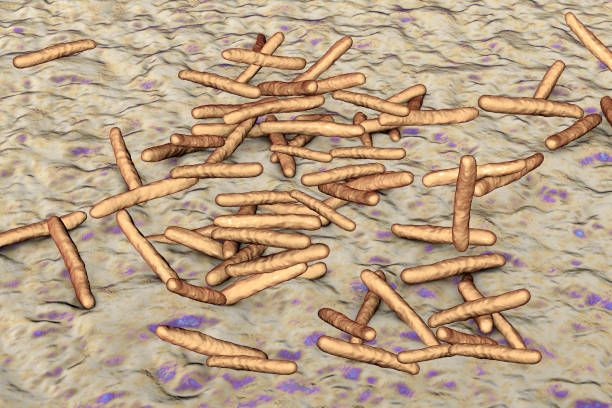A strategy has been developed involving ENTX_001, a liposome-encapsulated delivery system, which introduces Endolytix Cocktail 1 (EC1), an enzyme cocktail. This approach targets and deconstructs the complex envelope of mycobacteria, marking a progression in treating mycobacterial infections. ENTX_001 serves as the carrier for EC1, a blend of enzymes selected for their effectiveness against a range of mycobacterial species and their ability to enhance the effects of antibiotics, a new path for mycobacterial disease treatment.
In vitro studies show that the EC1 cocktail has bactericidal activity against both rapid- and slow-growing nontuberculous mycobacteria (NTM) and Mycobacterium tuberculosis strains, exceeding the performance of treatments using only LysB. EC1 also enhances the efficacy of standard antibiotics through synergy.
“We have shown the ability of the enzyme cocktail EC1 to kill NTM and M tuberculosis in vitro for a diverse set of pathogenic mycobacteria and M. abscessus,” according to the investigators. “The EC1 attacks mycobacteria at three layers in the envelope: the capsule, the mycomembrane, and the peptidoglycan layer through enzymatic degradation of the envelope.”
3 Key Takeaways
- The development of EC1, a targeted enzyme cocktail encapsulated within ENTX_001, represents an advancement in treating mycobacterial infections.
- In vitro studies demonstrate that EC1 exhibits direct bactericidal activity against various mycobacterial strains, including both rapid- and slow-growing nontuberculous mycobacteria and M tuberculosis but also enhances the efficacy of standard antibiotics through synergistic effects.
- The encapsulation of EC1 within ENTX_001 for targeted delivery to the site of infection addresses and aims to bypass the significant hurdles posed by antimicrobial resistance and the physiological barriers that limit the success of traditional treatments, including bacteriophage therapies.
The approach creates EC1, containing 4 enzymes: 2 mycobacteriophage lysin enzymes, LysA and LysB, and α-amylase and isoamylase. These enzymes are selected for their combined capability to break down various layers of the mycobacterial envelope. LysA focuses on the peptidoglycan layer, and LysB serves as an esterase that breaks the connection between arabinogalactan and mycolic acids in the mycomembrane.
In cellular models, ENTX_001 demonstrated the capability to prevent necrotic death in macrophages infected by Mycobacteroides abscessus and Mycobacterium avium. The observed mechanism of action is the breakdown of mycobacterial cells into cellular debris through the enzymatic activity of EC1, a direct bactericidal effect.
“Our enzybiotic approach differs from small molecule antibiotics that act passively; instead, EC1 actively degrades the mycobacterial envelope regardless of microbial physiology and is insensitive to genome defense mechanisms such as restriction enzyme digestion and CRISPR systems,” according to the investigators. “In addition, EC1 is not receptor limited like bacteriophage, thus expanding the applicable host range to both rapid-growing and slow-growing mycobacteria and closely related genera.”
Incorporating amylase enzymes aids in breaking down the extracellular capsule, a significant obstacle to delivering therapeutic agents effectively. ENTX_001 ensures delivery to the infection site and is tailored for macrophages. This approach seeks to bypass the limitations of traditional treatments and directly administer the enzyme cocktail to the affected cells.
“We have presented growth, microscopy, viability staining, and particle analysis data to demonstrate the ability of EC1 to shred mycobacteria into subcellular fragments that are separated from genomic DNA and prevent growth,” according to investigators. “The use of LysB-centered mycobacterial cocktail of enzybiotics was independently verified by a study in 2021 that used LysB, and α-amylase, against the envelope of M tuberculosis; however, substantial activity required the addition of Tween 80, not required by EC1.”
Overall, this strategy navigates around the challenges of antimicrobial resistance and the physiological barriers that have limited the efficacy of conventional bacteriophage treatments. Additional research is needed to assess the therapeutic possibilities of this approach.
Reference
1. Bartlett H, Dawson C, Glickman C, Osborn D, Evans C, et. al. Targeting Intracellular Nontuberculosis Mycobacteria and M Tuberculosis with a Bactericidal Enzymatic Cocktail. ASM Journals. Published March 27, 2024. Accessed March 27, 2024. doi: https://doi.org/10.1128/spectrum.03534-23

